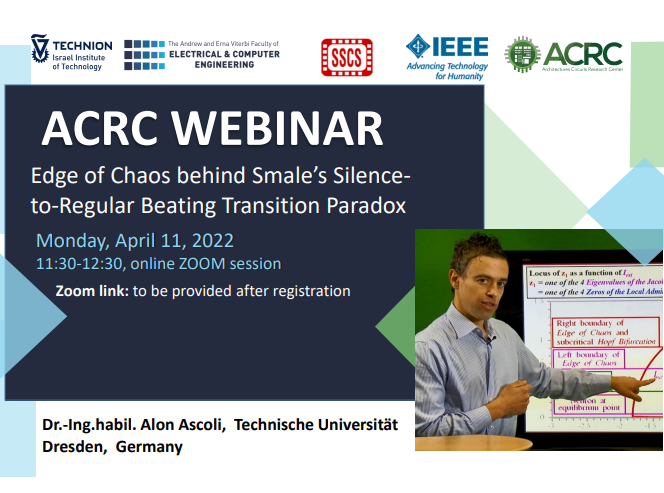In this seminar a bio-inspired memristor cellular nonlinear network, reproducing qualitatively the same counterintuitive phenomenon observed by Smale, is first designed. As compared to the 8th-order biological system in [1], the proposed array of two identical diffusively-coupled cells [4] features just 4 degrees of freedom, hosting 2 volatile locally-active niobium oxide-based threshold switches [5]-[6] from NamLab [7], and 2 capacitors, besides 3 resistors, and 2 batteries, to form the simplest everreported open physical system undergoing diffusion-driven instabilities with dynamic pattern formation. Then, a rigorous circuit- and system-theoretic study, based upon linearization analysis and large-signal phase-portrait investigations, sheds light on the local and global dynamics of the uncoupled cell, to demonstrate that, when the latter is biased on a globally asymptotically-stable and locally-active operating point, does the paradoxical phenomenon, reported by Smale in [1], emerge in the proposed bio-inspired array, under a sufficiently-strong resistive coupling condition. All in all, this presentation sheds light on the pivotal role that nonlinear circuit and system theory is expected to assume, in the years to come, to support circuit design with intrinsically-nonlinear nanodevices, and on the relevance of the adoption of solid-state memristive small-signal amplifiers ], [5 operating according to similar principles as the sodium and potassium ion channels in neuronal axon membranes [8], to reproduce the complex dynamics of biological networks in electronic systems.
Alon Ascoli (IEEE Senior Member) received a Habilitation as Full Professor in Fundamentals of Electrical Engineering from Technische Universität Dresden (TU Dresden) in 2022, a Ph.D. Degree in Electronic Engineering from University College Dublin in 2006, and a First-Class Honours Master’s Degree in Electronic Engineering from Universita’ degli Studi Roma Tre in 2001. He currently holds a tenure faculty position at the Institute of Principles of Electrical and Electronic Engineering of TU Dresden. He develops system-theoretic methods for the analysis and design of bio-inspired memristive/memcapacitive circuits bound to enable progress in electronics beyond the Moore era, and to allow the plausible reproduction of complex phenomena emerging in biological systems. He was honoured with Best Paper Awards from IJCTA in 2007 and MOCAST in 2020. In April 2017 he was conferred the habilitation title as Associate Professor in Electrical Circuit Theory from the Italian Ministry of Education. He is a member of the Scientific Advisory Board of the Chua Memristor Center, and of the IEEE Nanoelectronics and Gigascale Systems Technical Committee (Nano-Giga TC). He was the Chair of the IEEE Cellular Nonlinear Networks and Array Computing (CNNAC) TC from 2019 to 2021. Since 2021 he is the Chair of the new-born IEEE Cellular Nonlinear Networks and Memristive Array Computing (CNN-MAC) TC.
Important: The participation is free of charge, but registration is required
Registration for “Edge of Chaos behind Smale’s Silence-to-Regular Beating Transition Paradox”
For more details and updates on the series of “ACRC Semiconductor Webinars” please follow our newsletters and our website



